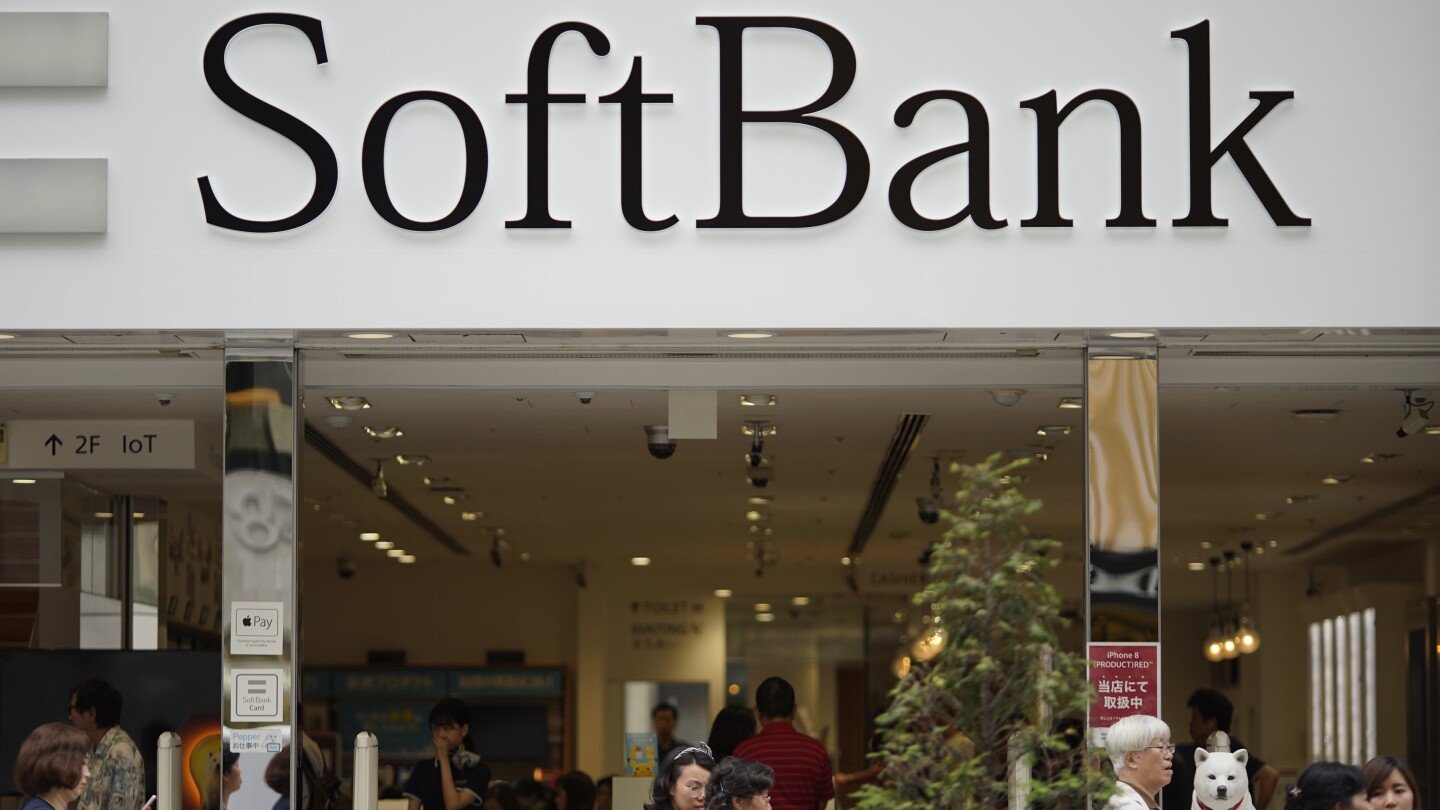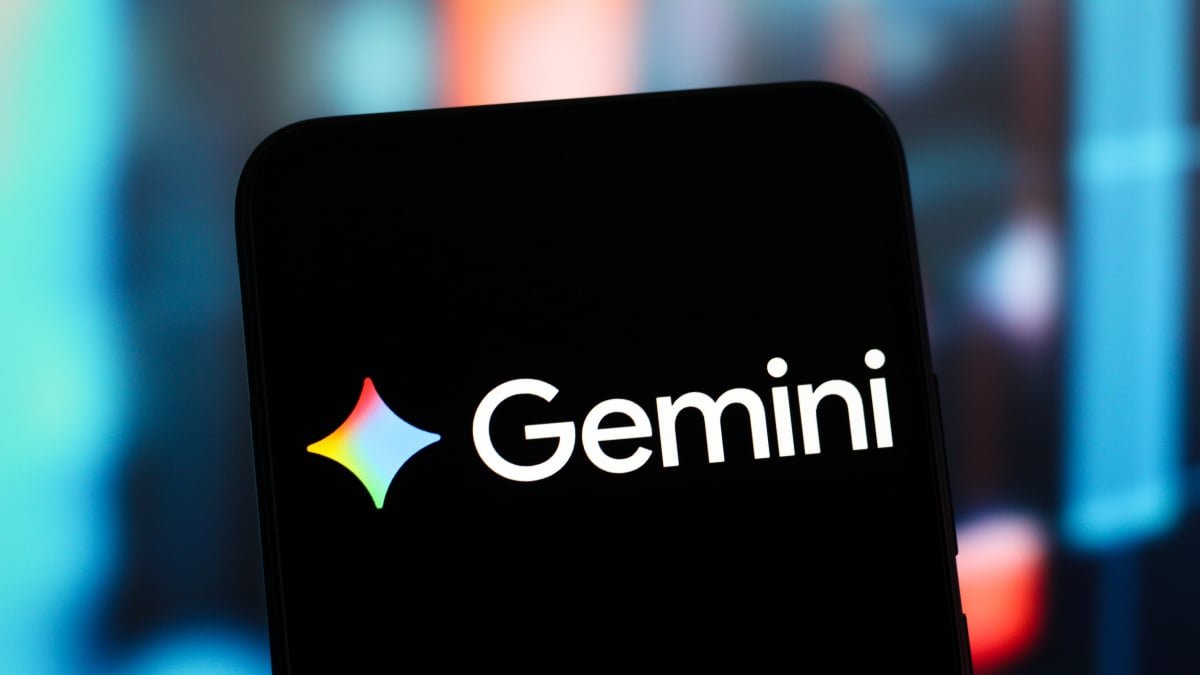Tools & Platforms
Japan tech giant SoftBank Group sees better fortunes on surging AI stocks

TOKYO (AP) — Japanese technology conglomerate SoftBank Group Corp. posted a 421.8 billion yen ($2.9 billion) profit in the April-June quarter, rebounding from a loss a year earlier as its investments benefited from the craze for artificial intelligence.
Quarterly sales at Tokyo-based SoftBank Group, which invests heavily in AI companies like Nvidia and Open AI, rose 7% to 1.8 trillion yen ($12 billion), the company said Thursday.
SoftBank’s loss in April-June 2024 was 174 billion yen.
The company’s fortunes tend to fluctuate because it invests in a range of ventures through its Vision Funds, a move that carries risks.
The group’s founder Masayoshi Son has emphasized that he sees a vibrant future in AI.
SoftBank has also invested in Arm Holdings and Taiwan Semiconductor Manufacturing Co. Both companies, which produce computer chips, have benefitted from the growth of AI.
“The era is definitely AI, and we are focused on AI,” SoftBank senior executive Yoshimitsu Goto told reporters. “An investment company goes through its ups and downs, but we are recently seeing steady growth.”
Some of SoftBank’s other investments also have paid off big. An example is Coupang, an e-commerce company known as the “Amazon of South Korea,” because it started out in Seoul. Coupang now operates in the U.S. and other Asian nations.
Goto said preparations for an IPO for PayPay, a kind of cashless payment system, were going well.
The company has already held IPOs for Chime, a U.S. “neobank” that provides banking services for low-credit consumers, and for Etoro, a personal investment platform.
SoftBank Group stock, which has risen from a year ago, finished 1.3% higher on the Tokyo Stock Exchange after its earnings results were announced.
___
Yuri Kageyama on Threads: https://www.threads.com/@yurikageyama
Tools & Platforms
How AI is Transforming Modern Logistics

The modern supply chain landscape is undergoing a fundamental transformation. Enterprises first saw the urgent need to derisk their supply chain and build viable alternatives, when, during the pandemic, they knew it was no longer enough to deliver just-in-time but had to also factor in for just-in-case. As global markets become increasingly complex and unpredictable, manufacturers and logistics providers are racing to build supply chains that prioritize three critical attributes: intelligence, resilience and speed. This evolution is driven by a confluence of factors, including consumer expectations, competitive pressures and the hard-learned lessons of recent global disruptions.
Current state of supply chain modernization
Technology has always been at the center of supply chain evolution. Companies did not hesitate to invest heavily in artificial intelligence (AI) and automation to modernize their operations. The goal they sought to achieve was end-to-end visibility, operational efficiency and strategic agility throughout their supply networks. This transformation encompasses everything from demand forecasting and inventory management to logistics optimization and supplier relationship management.
The intelligent supply chain has meant so much more than simply automating activities; it’s about fundamentally reimagining how goods move from conception to consumer. It’s also about creating adaptive networks that can respond dynamically to market changes, anticipate disruptions before they occur and optimize performance across multiple variables simultaneously. This clarity notwithstanding, many organizations find themselves struggling to achieve their supply chain goals. Their primary obstacles are deeply rooted in legacy systems and structural challenges that have accumulated over decades of organic growth and acquisitions. Outdated infrastructure presents perhaps the most significant barrier. These systems often lack the flexibility and interoperability required for modern supply chain operations. Fragmented data compounds this challenge exponentially. Information silos prevent organizations from developing the comprehensive visibility they need to make informed decisions. Customer data lives in one system, inventory information in another, and supplier performance metrics in yet another. This fragmentation makes it nearly impossible to develop the holistic view necessary for optimized supply chain performance.
These conditions expose the vulnerabilities in traditional supply chain models and highlight the urgent need for more resilient, adaptive approaches.
AI has emerged as a potentially transformative solution to these longstanding challenges
Today, AI offers the flexibility and adaptability needed to address the complex, interconnected nature of modern supply chains. Technology’s ability to process vast amounts of unstructured data, identify patterns across multiple variables and generate actionable insights in real time makes it uniquely suited to supply chain applications. AI can also synthesize information from disparate sources, translate between different data formats and provide coherent analysis even when dealing with incomplete or conflicting information. For example, a logistics leader transformed their IT, data, and logistics infrastructure using AI-powered platforms. The result: a 90% reduction in critical downtime, 40% faster issue resolution and a 35% boost in development productivity. Their journey underscores how even legacy enterprises can lead in the next generation of intelligent, adaptive supply chains through platform thinking and data-driven innovation.
Enhancing efficiency and decision-making
AI helps automate routine planning tasks, draw intelligent insights and uses them to optimize complex routing decisions, generate predictive models that help organizations anticipate and prepare for future challenges. This automation doesn’t just improve speed, it also reduces the cognitive load on human operators, allowing them to focus on strategic decision-making rather than routine data processing. The decision-making capabilities of AI are particularly valuable in supply chain contexts where multiple variables must be considered simultaneously. The technology can evaluate trade-offs between cost, speed, reliability and sustainability in ways that would be impossible for human operators to manage manually. This comprehensive analysis enables more informed decisions that consider both immediate operational needs and long-term strategic objectives.
Transforming operational performance
The operational impact of AI extends beyond immediate efficiency gains. It can identify optimization opportunities that human operators might miss, suggest alternative approaches to persistent challenges, and continuously refine processes based on real-world performance data. Perhaps most importantly, AI can help organizations develop more responsive, resilient supply chains by modeling potential disruption scenarios and suggesting preventive measures. This proactive approach represents a significant departure from traditional reactive supply chain management.
Recognizing limitations and ensuring complementary human capability
AI is most effective when it complements rather than replacing human expertise and traditional software solutions. Human oversight remains essential for validating AI-generated insights, making complex strategic decisions, and managing stakeholder relationships. Traditional software solutions continue to provide the operational backbone for supply chain operations, handling routine transactions and maintaining data integrity.
The path forward needs to be intentional
Success with generative AI in supply chain management requires a deliberate, strategic approach. Organizations must begin with clear objectives, understanding precisely what they hope to achieve and how they will measure success. This clarity helps ensure that AI implementations address real business needs with measurable business outcomes. It’s important to appreciate that supply chain transformation affects multiple departments and stakeholders, and successful implementations require coordination and alignment across these groups. A unified approach helps ensure that AI initiatives support overall business objectives rather than creating new silos or inefficiencies. The transformation won’t happen overnight, but the companies that begin this journey thoughtfully today will have significant competitive advantages in the years to come.
Tools & Platforms
Google’s AI, Gemini, is ‘high risk’ for kids and teens, safety report finds

You might want to think twice before letting your children use Google Gemini.
A new safety report from nonprofit Common Sense Media found that the search giant’s AI tool, Gemini, presents a “high risk” for kids and teens. The assessment found that Gemini presented a risk to young people despite Google having an “Under 13” and “Teen Experience” for Gemini.
“While Gemini’s filters offer some protection, they still expose kids to some inappropriate material and fail to recognize serious mental health symptoms,” the report read.
Mashable Light Speed
The safety assessment presented a mixed bag of results for Gemini. It would, at times, for instance, reportedly share “material related to sex, drugs, alcohol, and unsafe mental health ‘advice.'” It did, however, clearly tell kids that it is a computer and not a friend — it would also not pretend to be a person. Overall, Common Sense Media found that Gemini’s “Under 13” and “Teen Experience” were modified versions of Gemini and not something built from the ground up.
“Gemini gets some basics right, but it stumbles on the details,” Common Sense Media Senior Director of AI Programs Robbie Torney said in a statement. “An AI platform for kids should meet them where they are, not take a one-size-fits-all approach to kids at different stages of development. For AI to be safe and effective for kids, it must be designed with their needs and development in mind, not just a modified version of a product built for adults.”
To be clear, Gemini is far from the only AI tool that presents safety risks. Overall, Common Sense recommends no chatbots for kids under five, close supervision for ages 6-12, and content limits for teens. Experts have found that other AI products, like Character.AI, are not safe for teens, either. In general, it’s best to keep a close eye on how young people are using AI.
Tools & Platforms
Companies Hire Freelancers to Fix Errors in Content and Hiring

In a twist of technological irony, companies that once eagerly replaced human workers with artificial intelligence systems are now scrambling to hire freelancers and specialists to clean up the messes those AI tools have created. This reversal highlights the limitations of current AI technologies, which often produce error-ridden content, biased outputs, or inefficient processes that demand human intervention. According to a recent report in Futurism, businesses across sectors like content creation, graphic design, and software development are turning to human experts to rectify sloppy AI-generated work, effectively creating a new niche market for “AI fixers.”
The phenomenon stems from the overhyped promise of AI as a cost-saving miracle. Many firms laid off staff in favor of automated systems, only to discover that these tools frequently output subpar results—think garbled text, inaccurate code, or visually inconsistent designs. Freelancers like graphic designers and writers are reporting a surge in gigs specifically aimed at polishing AI slop, as companies realize that unchecked automation can damage their reputations and bottom lines.
The Hidden Costs of AI Adoption
This hiring rebound isn’t just anecdotal; it’s backed by emerging data and industry observations. A piece in the BBC earlier this year noted how AI hiring platforms, intended to streamline recruitment, often filter out qualified candidates due to inherent biases, prompting companies to bring in human reviewers to audit and correct these decisions. Similarly, reports from CIO magazine warn that early-stage AI in hiring can exacerbate diversity issues, leading to legal risks and necessitating human oversight to ensure compliance.
Beyond content and hiring, the issue extends to critical sectors where AI errors carry higher stakes. In software engineering, for instance, AI-generated code often requires debugging by human programmers, as highlighted in discussions from McKinsey, which emphasizes the need for transparent AI systems to build trust. Companies are learning the hard way that skimping on human input upfront leads to amplified expenses later, with some estimates suggesting correction costs can exceed initial savings from automation.
Industry Responses and Future Implications
Executives are now recalibrating their strategies, blending AI with human expertise in hybrid models. A Harvard Business Review analysis from a few years back presciently outlined how predictive algorithms in hiring drift toward bias without proactive mitigation, a point echoed in recent American Bar Association guidelines urging legal compliance through human-led audits. This shift is fostering new roles, such as AI ethicists and bias auditors, who specialize in identifying and fixing systemic flaws.
For industry insiders, this trend underscores a broader lesson: AI isn’t a plug-and-play solution but a tool requiring robust human governance. As Pew Research Center surveys indicate, public skepticism toward AI in hiring is growing, with many viewing it as impersonal and unfair. Companies ignoring this risk alienating talent pools and facing regulatory scrutiny.
Navigating the Human-AI Balance
Looking ahead, the integration of humans to fix AI errors could evolve into standardized practices, potentially reshaping job markets. Insights from American Civil Liberties Union reports highlight discrimination risks in AI-driven processes, advocating for mandatory human intervention to promote equity. Meanwhile, firms like those profiled in VidCruiter are developing mitigation strategies, but the consensus is clear: true efficiency demands a symbiotic relationship between machines and people.
Ultimately, this hiring irony serves as a cautionary tale for tech adopters. As AI capabilities advance, the demand for human fixers may wane, but for now, it’s a booming side hustle born from overambitious automation. Industry leaders must prioritize ethical deployment to avoid these costly detours, ensuring that innovation enhances rather than undermines human ingenuity.
-

 Business1 week ago
Business1 week agoThe Guardian view on Trump and the Fed: independence is no substitute for accountability | Editorial
-
Tools & Platforms4 weeks ago
Building Trust in Military AI Starts with Opening the Black Box – War on the Rocks
-

 Ethics & Policy1 month ago
Ethics & Policy1 month agoSDAIA Supports Saudi Arabia’s Leadership in Shaping Global AI Ethics, Policy, and Research – وكالة الأنباء السعودية
-

 Events & Conferences4 months ago
Events & Conferences4 months agoJourney to 1000 models: Scaling Instagram’s recommendation system
-

 Jobs & Careers2 months ago
Jobs & Careers2 months agoMumbai-based Perplexity Alternative Has 60k+ Users Without Funding
-

 Education2 months ago
Education2 months agoVEX Robotics launches AI-powered classroom robotics system
-

 Podcasts & Talks2 months ago
Podcasts & Talks2 months agoHappy 4th of July! 🎆 Made with Veo 3 in Gemini
-

 Funding & Business2 months ago
Funding & Business2 months agoKayak and Expedia race to build AI travel agents that turn social posts into itineraries
-

 Education2 months ago
Education2 months agoMacron says UK and France have duty to tackle illegal migration ‘with humanity, solidarity and firmness’ – UK politics live | Politics
-

 Podcasts & Talks2 months ago
Podcasts & Talks2 months agoOpenAI 🤝 @teamganassi
















